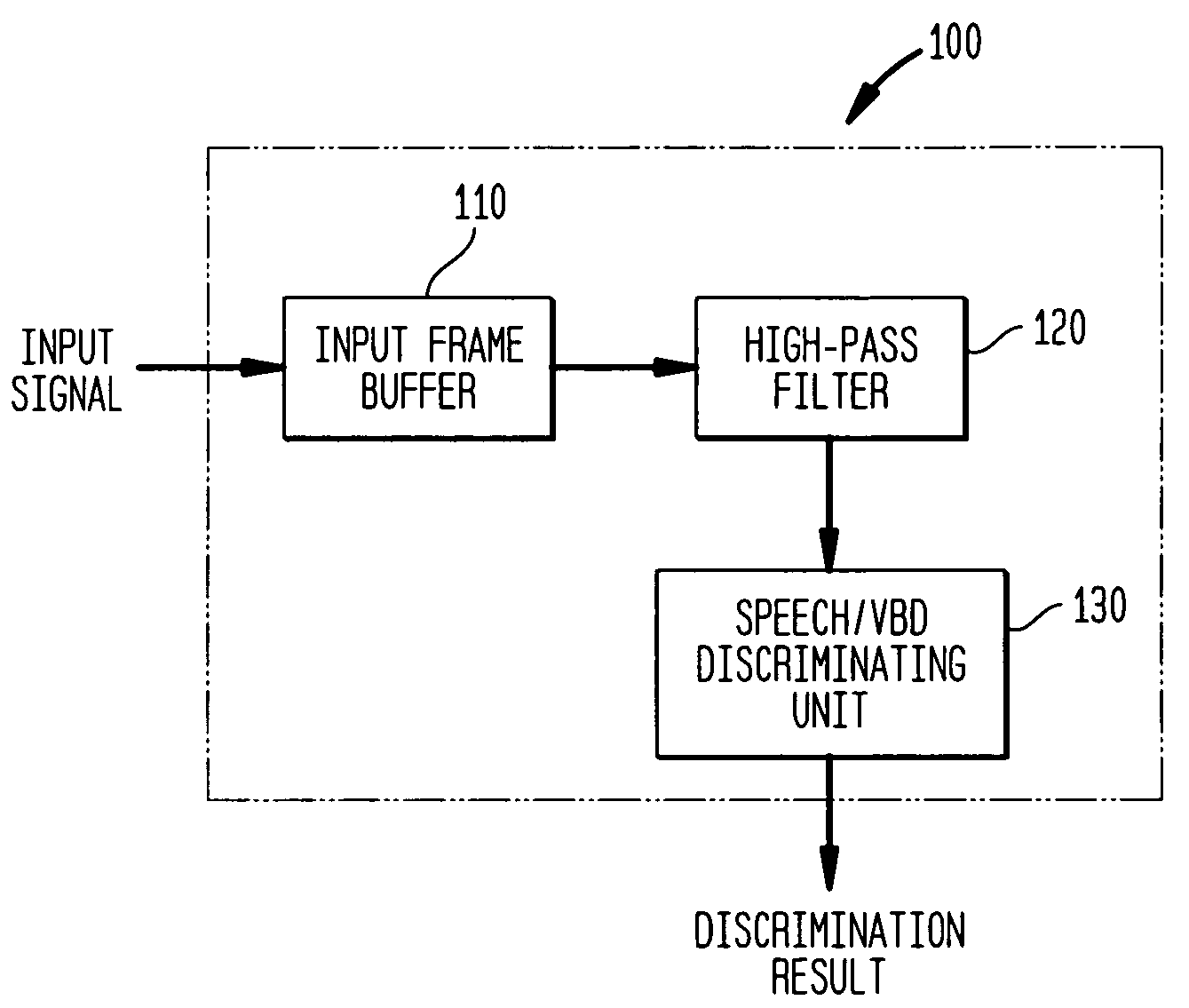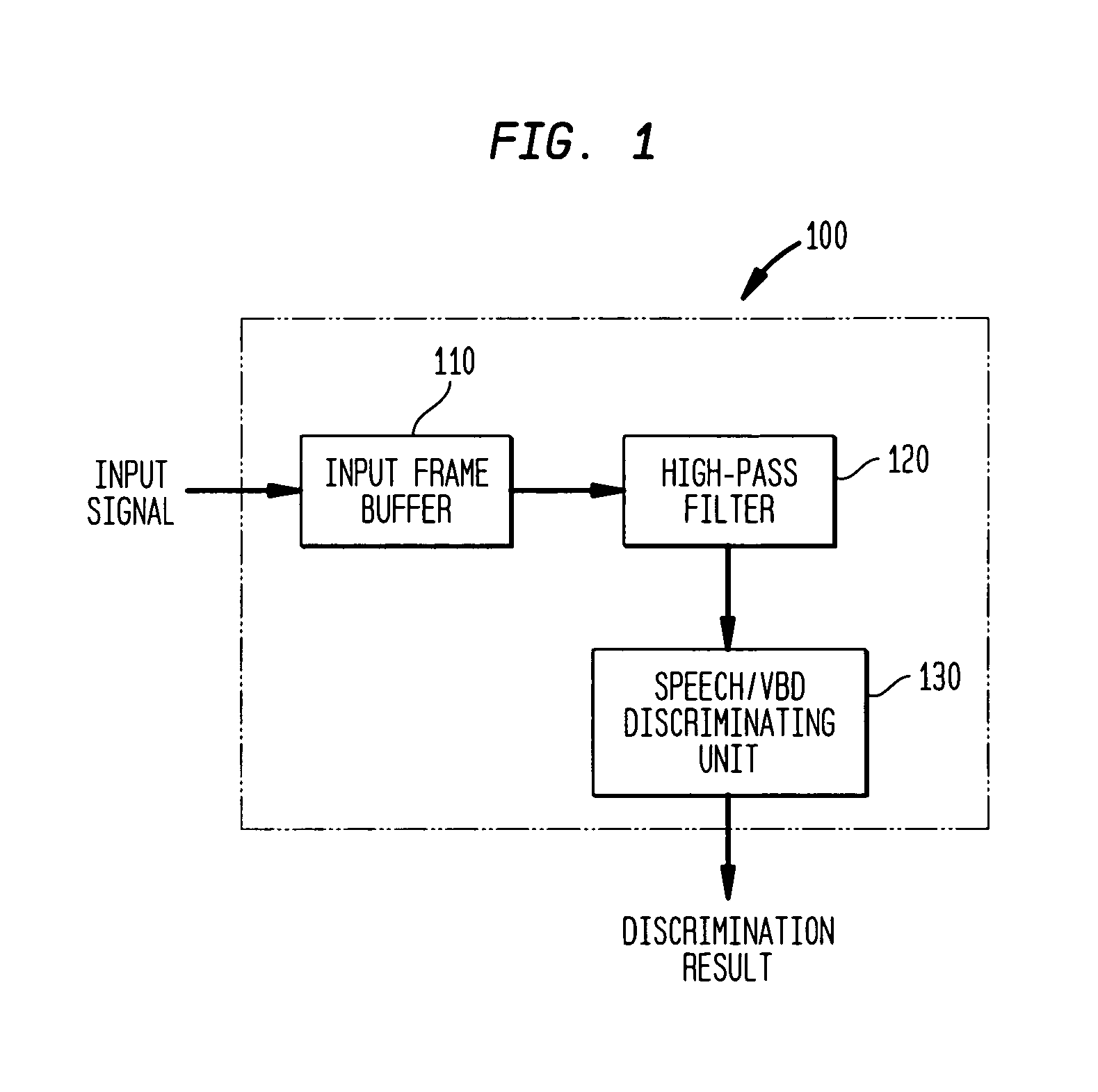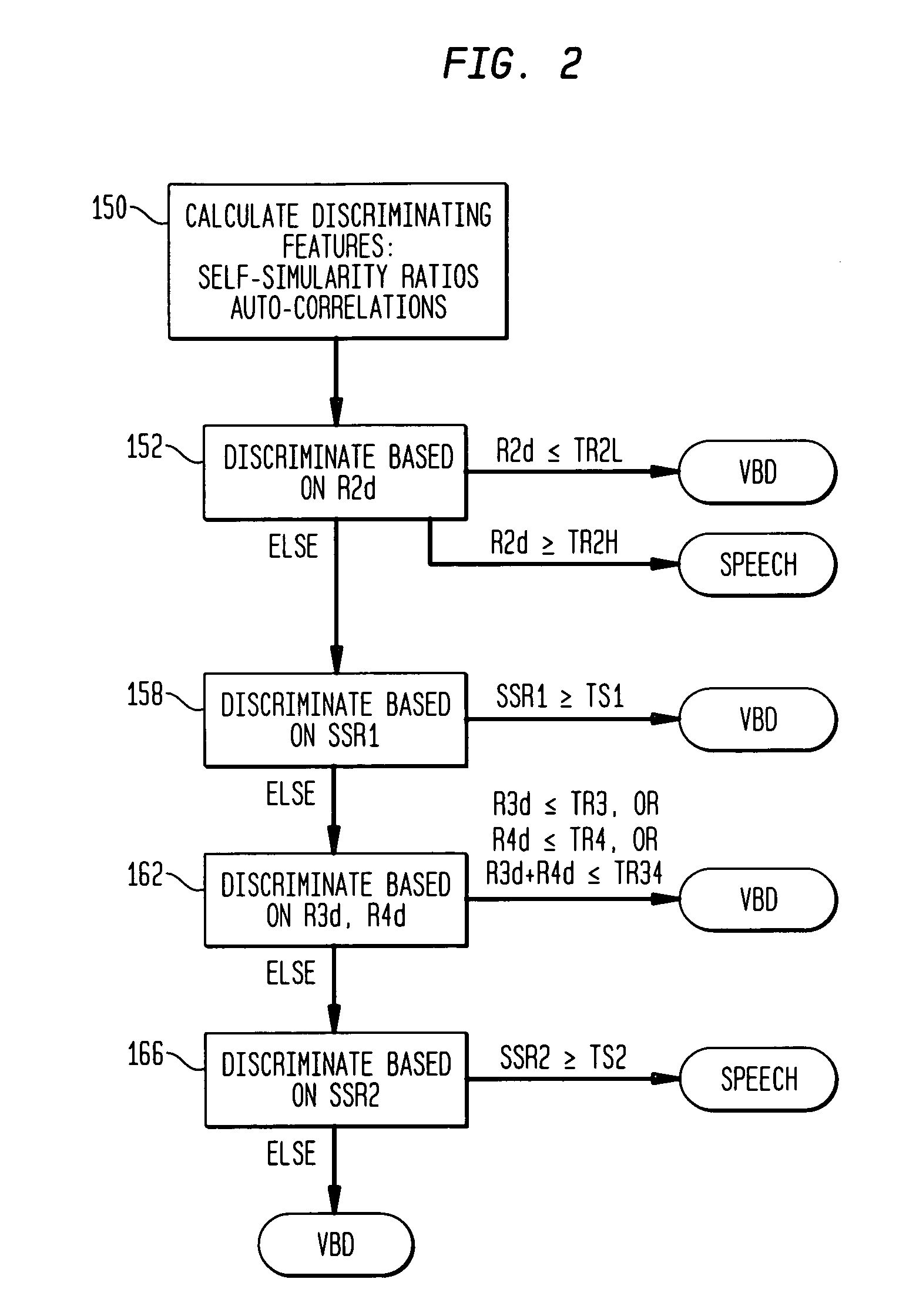Method and apparatus for discriminating speech from voice-band data in a communication network
a communication network and voiceband data technology, applied in the field of communication, can solve the problems of higher error rate, significant increase in error rate of such techniques, so as to improve classification performance and improve discrimination accuracy
- Summary
- Abstract
- Description
- Claims
- Application Information
AI Technical Summary
Benefits of technology
Problems solved by technology
Method used
Image
Examples
Embodiment Construction
[0014]The present invention is a method and apparatus for accurately discriminating speech from VBD in a communication network. FIG. 1 is a general block diagram illustrating an exemplary speech / VBD discriminator 100 in accordance with one embodiment of the present invention which may be implemented in a network interface device, such as an ATM trunking device or an IP-telephone network gateway. As shown in FIG. 1, the speech / VBD discriminator 100 includes an input frame buffer 110, a high-pass filter 120, and a speech / VBD discriminating unit 130. It should be recognized that, although the general block diagram of FIG. 1 illustrates a plurality of discrete components, the VBD / discriminator 100 may be implemented in a variety of ways, such as in a software driven processor, e.g., a Digital Signal Processor (DSP), in programmable logic devices, in application specific integrated circuits, or in a combination of such devices.
[0015]The input frame buffer 110 receives an input signal, e....
PUM
 Login to View More
Login to View More Abstract
Description
Claims
Application Information
 Login to View More
Login to View More - R&D
- Intellectual Property
- Life Sciences
- Materials
- Tech Scout
- Unparalleled Data Quality
- Higher Quality Content
- 60% Fewer Hallucinations
Browse by: Latest US Patents, China's latest patents, Technical Efficacy Thesaurus, Application Domain, Technology Topic, Popular Technical Reports.
© 2025 PatSnap. All rights reserved.Legal|Privacy policy|Modern Slavery Act Transparency Statement|Sitemap|About US| Contact US: help@patsnap.com



